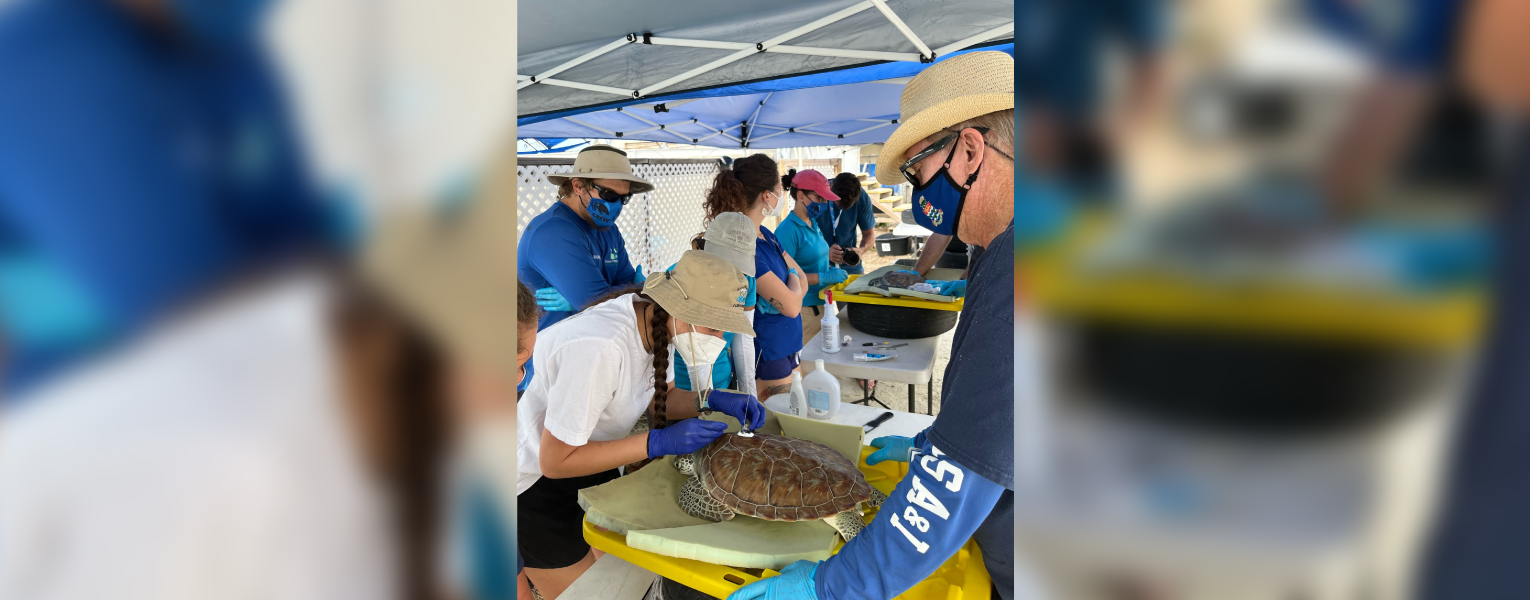8/08/2023
Tracking Turtles
FAU Researcher Studies Sea Turtle Movement Patterns
By Bethany Augliere
To save endangered species, it’s necessary to understand their behavior and important habitat. But for some species, like sea turtles, this isn’t so easy. Determining where sea turtles journey in the ocean and how they get there, has remained a bit of a mystery to scientists, according to Emily Turla, doctoral student at FAU Charles E. Schmidt College of Science and laboratory coordinator for the FAU Marine Lab — until now.
In a recent study published in the journal, Animals, scientists figured out that the time of year and location matter when releasing adolescent turtles that were raised in captivity, called head-started turtles, which is crucial information for release programs and conservation efforts, Turla said.
To figure out the mysterious movement patterns of juvenile sea turtles, a group of scientists, including Turla, attached tiny satellite trackers to 40 captive-raised green sea turtles off the coast of the Cayman Islands.
The challenge in studying small turtles, Turla said, is that “smaller turtles mean smaller technology and smaller tags. The tags we used are still considered new technology so every time they are used it is a test of tag performance.” Younger turtles also grow quickly so researchers need to ensure the attached tags will stay with the turtles as long as possible before being shed off, she added.
For this study, the scientists released turtles of different ages, between 1 and 4 years old, to compare any age-related differences in their movements, Turla said. They also released them at different times and places to observe if those factors played a role in their movements.
“The most important finding from the study was that the release location and time of year impacted the movements of the turtles initially,” Turla said. The young turtles immediately responded to the direction of the currents upon being released. The turtles released in January had different movement patterns from those in July.
According to the study, the January turtles all moved in random directions from the islands around the Caribbean, whereas the July turtles all moved north of the islands. Additionally, both the January and the July turtles swam harder and with more direction the closer they got to coastal areas. Turtles also appeared to mostly swim in the opposite direction to ocean currents to keep their desired path.
“These head-started turtles were able to orient themselves to appropriate habitats after their release, even though they had a diversity of dispersal patterns to get to these habitats. They initially were influenced by the currents and then eventually began to chart their own courses,” said Turla, adding that results from this study mean that when considering the future conservation of green sea turtles and release programs, location and timing are important things to consider when releasing turtles.
If you would like more information, please contact us at dorcommunications@fau.edu.
